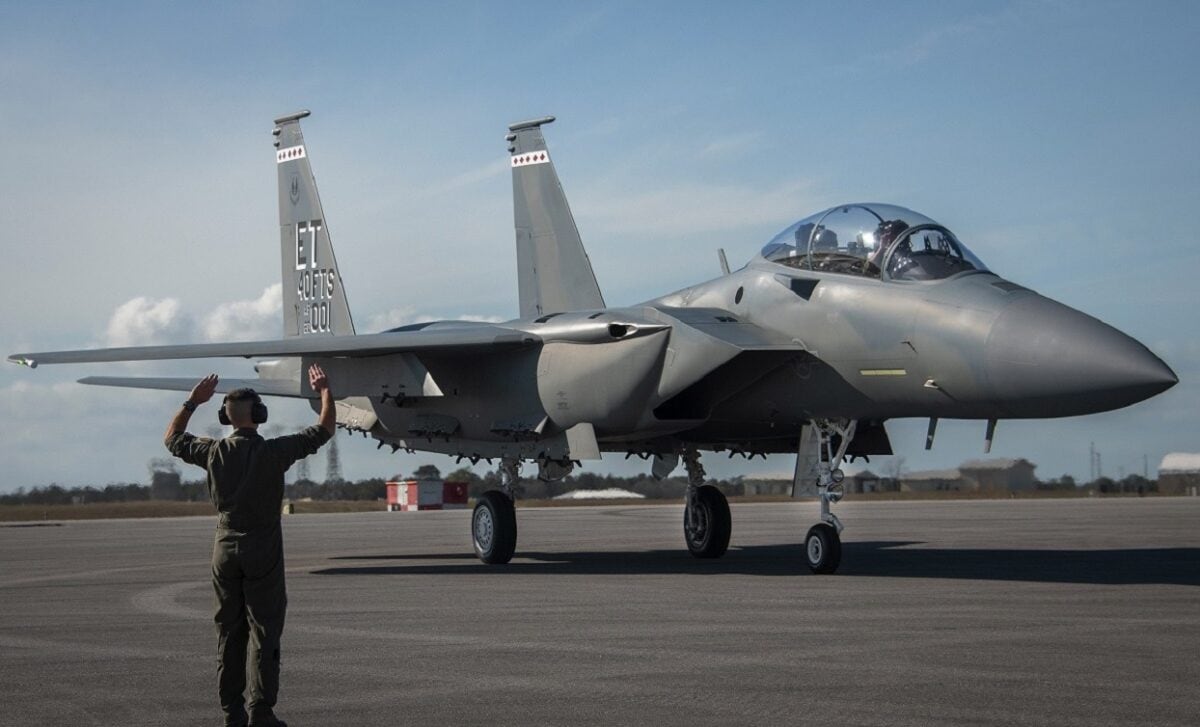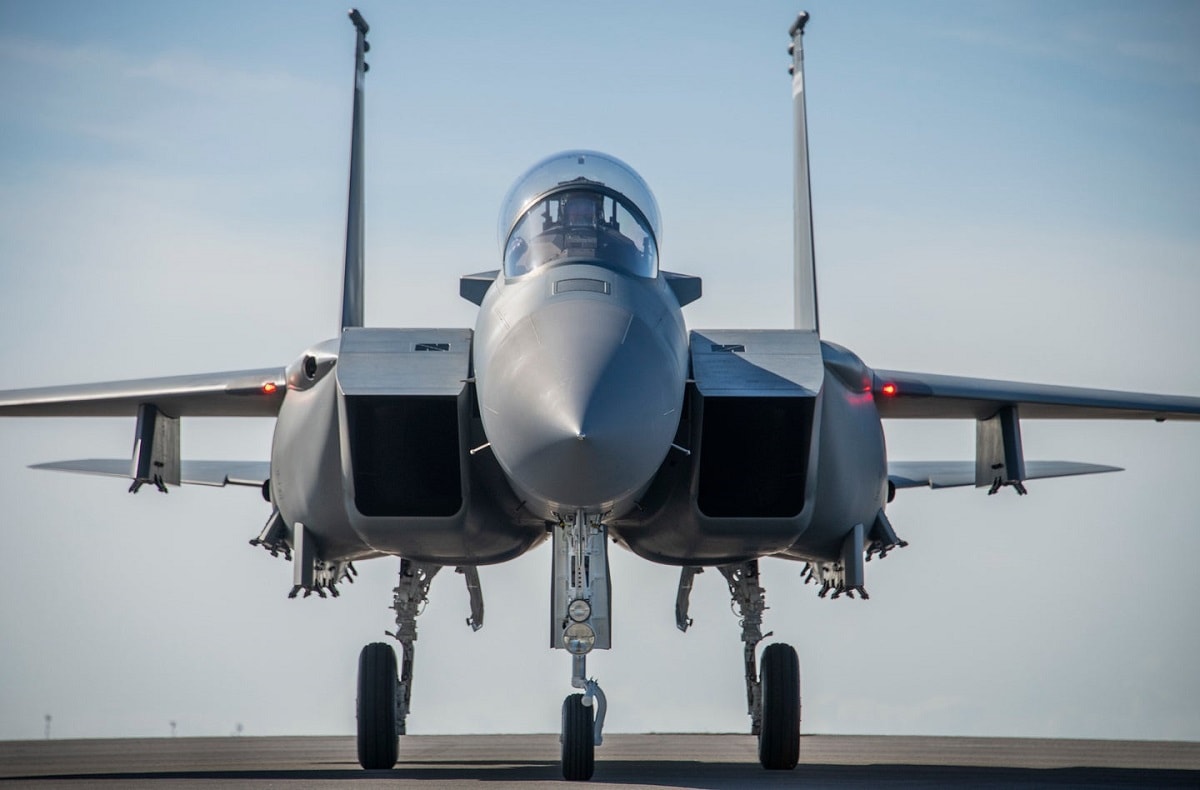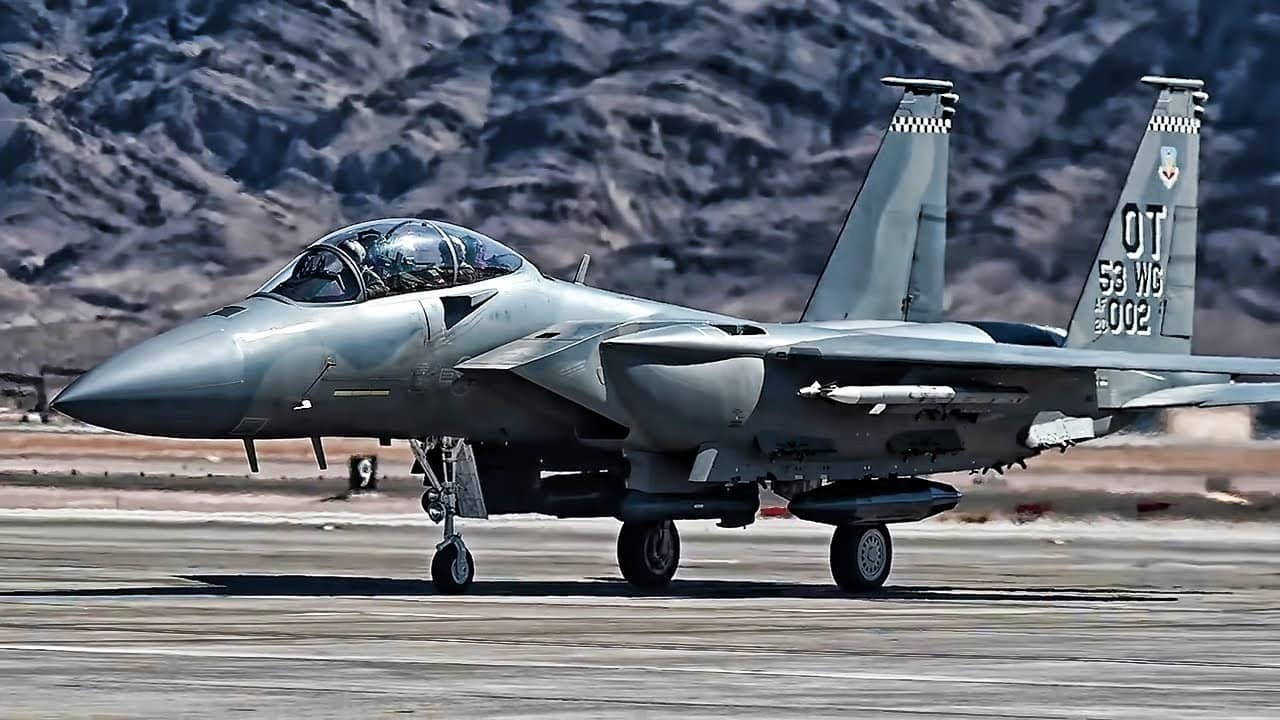The F-15EX Eagle II takes a mature design and makes it ready for war in the 21st century. Can it take on the best that China or Russia have to offer? And what about the F-35? The McDonnell Douglas F-15 Eagle first entered service back in 1976, just months before the United States’ bicentennial celebrations. The twin-engine, all-weather tactical aircraft has had one of the most successful track records of modern fighters, with more than 100 victories and no losses in aerial combat. The aircraft’s design also proved flexible enough that an improved all-weather strike derivative, the F-15E Strike Eagle, was later developed and entered service in 1989.
However, the United States Air Force’s F-15Cs, many of which entered service in the 1980s, are now showing their age, and to that end Boeing – which merged with McDonnell Douglas in August 1997 – offered new life for the platform. The result is the F-15EX.
Externally the aircraft may resemble the original F-15, but as Boeing has sold the proven platform to international partners such as South Korea and more recently Kuwait, it has steadily improved the fighter in the process. In 2020, the United States Air Force determined that the upgraded fourth-generation F-15EX would be a reliable – and more importantly affordable – fighter to complement its fifth-generation fleet of Lockheed Martin F-35 Lightning IIs.
Much More Than the F-15
The F-15EX is a two-seat all-weather, multi-role fighter that offers enhanced capabilities that are completely unique to the U.S. Air Force. It includes fly-by-wire flight controls, new weapons stations, new electronic warfare suite, advanced radar and computer, conformal fuel tanks and a strengthened airframe. The improved F-15EX also features a deep magazine that will allow it to carry a load of advanced weapons – yet with a 28 percent larger payload than the F-15E. At the same time, the fighter will also require only minimal transitional training and little additional manpower from the older versions of the F-15. According to the Air Force it has also required little to no infrastructure changes.
The Air Force has estimated that the F-15EX fighter shares about 70 percent of parts with the current F-15Cs and F-15Es that it will be replacing. In addition, the original production lines in St. Louis still in place, while the aircraft’s training facilities, maintenance depots, and other infrastructure can be also be readily shifted to F-15EX support.
The result is the a fighter will be easier to build and quicker to put into service, while it will also result in a platform that can be maintained over an equal number of F-35s.
Boeing has also noted that the F-15EX can enable rapid technology insertion that will ensure the platform’s relevance for decades to come. This will be accomplished via an Open Mission Systems Architecture, which can deliver Advanced Battle Management Systems (ABMS) capabilities, allowing the F-15EX to operate independently while isolated but also to reconnect to the global cloud.
The F-15EX made its inaugural flight on Feb. 2, 2021, and last year delivered two of the aircraft to Eglin Air Force Base (AFB) for testing.
The Air Force Wants the F-15EX
As part of the Fiscal Year 2023 (FY23) budget, the Air Force will cut the number of F-35s it will acquire and instead will procure additional F-15EXs.
The service even opted to surge F-15EX procurement so that it could replace its F-15C/Ds as quickly as possible and lower F-35 procurement until the time where the service can buy the more advanced F-35 Block 4 model.

Image: Creative Commons.

Image: U.S. Air Force.
The United States Air Force may not be the only operator of the F-15EX however. Boeing has announced that it plans to submit the aircraft for the Indian Air Force’s Multi-Role Combat Aircraft (MRCA) competition, which was set up to determine the aircraft that could meet the Indian armed force’s requirements. The U.S. government has authorized the aerospace giant to sell F-15 fighter jets to India, and that would be the F-15EX Eagle II variants.
If the submission is accepted, Boeing will face some tough competition from the likes of the Saab Gripen, Russia’s MiG-23 and Su-35 aircraft, as well as France’s Dassault Rafale, Lockheed Martin’s F-21, and the Eurofighter Typhoon.
Now a Senior Editor for 1945, Peter Suciu is a Michigan-based writer who has contributed to more than four dozen magazines, newspapers and websites. He regularly writes about military hardware, and is the author of several books on military headgear including A Gallery of Military Headdress, which is available on Amazon.com. Peter is also a Contributing Writer for Forbes.

